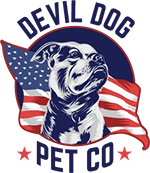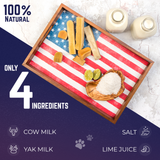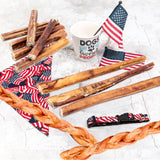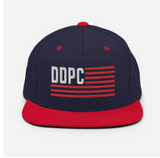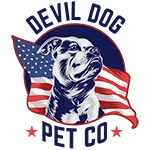Key Takeaways
- Peanut butter can be a safe and enjoyable treat for puppies when given in appropriate amounts.
- Owners must carefully check the ingredients of peanut butter to ensure it is safe for their puppies.
- Proper portion control is essential to prevent health issues related to peanut butter consumption.
- Understanding what is inside the peanut butter jar is crucial to avoid potential emergencies.
- Responsible feeding practices help maximize the benefits of peanut butter as a protein-packed treat for puppies.
Table of Contents
- Can Puppies (& Your Dog Dexter) Eat Peanut Butter?, Safety, Myths, and Devil Dog-Approved Rules
- Peanut Butter Nutrition for Puppies, Benefits, Limits, and What Science Really Says
- How Much Peanut Butter Is Safe for Puppies?, Exact Dosages, Frequency & Adjustments
- The Xylitol Trap, Identifying & Avoiding Dangerous Additives in Peanut Butter
- When Can I Start Feeding Peanut Butter to My Puppy?, Right Age, Intro Steps, and Milestones
- The Right Peanut Butter, Devil Dog Criteria for Selecting Safe Brands & Types
- Peanut Butter and Puppy Training, Real Techniques for Enrichment, Obedience, and Stress Relief
- Troubleshooting Peanut Butter Problems, Allergies, Digestive Upsets, and Refusals
Peanut Butter Puppies, Safe Feeding, Science, and Extreme Dog Leadership Techniques
That jar of peanut butter in your pantry? It's either your puppy's new best friend or a potential emergency room visit waiting to happen. The difference lies in knowing exactly what's inside that jar and how much hits the bowl. Most peanut butter puppies can safely enjoy this protein-packed treat, but only when owners take full responsibility for ingredient vetting and portion control.
Here's the unfiltered truth: peanut butter isn't dog food, it's a high-calorie training tool that demands respect. One teaspoon of the wrong brand containing xylitol can kill a 20-pound dog within hours. But the right peanut butter, served correctly, transforms into your secret weapon for crate training, pill delivery, and building rock-solid recall commands.
Bottom line: peanut butter delivers quick energy and training motivation, but it's not a meal replacement or daily staple. Use it strategically for high-value rewards, then graduate to longer-lasting, dental-friendly options like properly sized chews for sustained enrichment. For example, 6" Ultra Thick Bully Sticks or a Beast Himalayan Dog Chew can provide extended chewing satisfaction and additional health benefits.
Can Puppies (& Your Dog Dexter) Eat Peanut Butter?, Safety, Myths, and Devil Dog-Approved Rules
Peanut Butter Nutrition for Puppies, Benefits, Limits, and What Science Really Says

Two tablespoons of natural peanut butter pack 16 grams of protein, 190 calories, and essential B vitamins, roughly equivalent to a small meal for a 30-pound dog. That's the double-edged reality of peanut butter puppies: you're serving concentrated nutrition that can support muscle development or trigger obesity, depending on your portion control discipline.
The AAFCO guidelines are crystal clear, treats should never exceed 10% of daily caloric intake. For context, that 190-calorie serving represents 20% of a medium dog's daily needs, meaning most owners are overfeeding without realizing it. The healthy fats support coat shine and brain development, but excess calories convert straight to belly fat.
| Treat Type | Calories per Serving | Protein (g) | Chew Duration | Dental Benefits |
|---|---|---|---|---|
| Peanut Butter (2 tbsp) | 190 | 16 | 2-5 minutes | Minimal |
| Devil Dog Yak Chew (Medium) | 85 | 18 | 30-60 minutes | High |
| Bully Stick (6-inch) | 88 | 20 | 15-30 minutes | Moderate |
If you're interested in learning more about healthy treat options, bully sticks and Himalayan Dog Yak Chews are both excellent alternatives for puppies who need longer-lasting enrichment.
How Much Peanut Butter Is Safe for Puppies?, Exact Dosages, Frequency & Adjustments
The math is simple: peanut butter puppies should never exceed ½ teaspoon per 10 pounds of body weight per day, and that's your absolute ceiling, not your starting point. A 20-pound puppy maxes out at 1 teaspoon daily, split across training sessions, not served as a single blob.
Start conservative: pea-sized portions for puppies under 12 weeks, ¼ teaspoon for dogs 15-25 pounds, and scale up gradually while monitoring stool consistency and energy levels. Soft stools or hyperactivity signal you've crossed the line, dial back immediately and provide fresh water.
Weight-Based Dosing Chart
5-15 lbs: ¼ teaspoon maximum daily16-30 lbs: ½ teaspoon maximum daily
31-50 lbs: 1 teaspoon maximum daily
51+ lbs: 1 tablespoon maximum daily
| Puppy Weight | Max Daily Amount | Per Session Limit | Warning Signs |
|---|---|---|---|
| 5-15 lbs | ¼ teaspoon | Pea-sized | Soft stool, lethargy |
| 16-30 lbs | ½ teaspoon | ¼ teaspoon | Loose stool, hyperactivity |
| 31-50 lbs | 1 teaspoon | ½ teaspoon | Vomiting, excessive thirst |
| 51+ lbs | 1 tablespoon | 1 teaspoon | Diarrhea, weight gain |
If your puppy shows any digestive upset within 6 hours, cut the portion in half and wait 48 hours before the next serving. Remember, this is enrichment, not nutrition. Your dog's kibble provides complete nourishment; peanut butter is the cherry on top.
The Xylitol Trap, Identifying & Avoiding Dangerous Additives in Peanut Butter
Xylitol triggers insulin release so violent it can drop a dog's blood sugar to coma levels within 30 minutes. A single stick of sugar-free gum contains enough xylitol to kill a small dog, now imagine what a tablespoon of xylitol-sweetened peanut butter can do to peanut butter puppies.
Red Flag Ingredients, Never Feed
Immediate Danger: Xylitol, birch sugar, erythritol, sorbitolAvoid Always: Chocolate chips, raisins, macadamia nuts, excessive salt
Questionable: Palm oil, corn syrup, artificial preservatives
Read every ingredient twice, not just the front label marketing. Manufacturers hide xylitol under names like "birch sugar" or list it fifth in a six-ingredient product, still lethal. If xylitol appears anywhere on the label, that jar stays on the shelf, period.
Emergency protocol if your dog ingests xylitol: call your vet immediately, don't induce vomiting unless specifically instructed, and transport to the clinic while someone monitors breathing and consciousness. Time matters more than anything else in xylitol poisoning cases. For more details, see this FDA resource on xylitol toxicity in dogs.
When Can I Start Feeding Peanut Butter to My Puppy?, Right Age, Intro Steps, and Milestones

Hold off until 8 weeks minimum, preferably 12 weeks when digestive systems can handle rich foods without triggering diarrhea or vomiting. Peanut butter puppies under 8 weeks lack the enzyme production to process high-fat treats safely, stick to mother's milk or puppy formula until weaning completes.
The stepwise introduction protects against allergic reactions and digestive chaos. Start with a fingertip-sized dab, let your puppy lick it off your finger, then monitor for 2-4 hours for facial swelling, hives, or unusual behavior. Wait 24-48 hours before the second exposure, gradually increasing to training-sized portions over a week.
Stepwise Peanut Butter Introduction
Week 1: Fingertip taste test, monitor 24 hoursWeek 2: Pea-sized portion, supervise for digestive response
Week 3: Training-sized portions during command work
Signs to Stop: Vomiting, facial swelling, excessive scratching, loose stool
For more on safe treat introductions, you might enjoy this guide to safe antler chews for puppies and how to choose the right options for your dog's age and size.
The Right Peanut Butter, Devil Dog Criteria for Selecting Safe Brands & Types
Single-ingredient peanut butter wins every time: peanuts, period. The moment you see added sugar, salt, or stabilizers, you're compromising your dog's health for manufacturer convenience. Natural separation isn't a flaw, it's proof you're buying real food, not processed paste loaded with palm oil to prevent stirring.
Smooth beats chunky for peanut butter puppies and small dogs because whole peanut pieces create choking hazards in excited gulpers. Organic matters when you're feeding this treat regularly, conventional peanuts carry higher aflatoxin loads that stress liver function over time.
| Peanut Butter Type | Safety Rating | Best Use Case | Storage Needs |
|---|---|---|---|
| Single-ingredient natural | Excellent | All training, Kong stuffing | Refrigerate after opening |
| Dog-specific brands | Good | Convenience, travel | Pantry stable |
| Commercial smooth | Variable | Check ingredients carefully | Convenient consistency |
| Fresh ground | Excellent | No additives guaranteed | Refrigeration required |
| Brand Type | Safety Score | Puppy Suitability | Mess Factor | Price Range |
|---|---|---|---|---|
| Single-Ingredient Natural | Excellent | Perfect after 12 weeks | Oil separation requires stirring | $8-12/jar |
| Dog-Specific Brands | Good | Formulated for canines | Minimal | $6-10/jar |
| Commercial Smooth | Variable | Check ingredients carefully | Convenient consistency | $3-6/jar |
| Fresh Ground | Excellent | No additives guaranteed | Refrigeration required | $10-15/jar |
Your checklist: flip the jar, read ingredients bottom to top, verify no xylitol variants, confirm smooth texture for puppies under 6 months, and choose brands that separate naturally, oil on top signals real peanuts, not stabilized paste.
Peanut Butter and Puppy Training, Real Techniques for Enrichment, Obedience, and Stress Relief
Kong stuffing transforms peanut butter puppies from destructive chewers into focused problem-solvers. Spread a thin layer inside the Kong, freeze for 2 hours, and watch your puppy work for 20-30 minutes instead of shredding your couch cushions. The frozen texture extends chew time while preventing rapid consumption that triggers stomach upset.
Lick mats paired with peanut butter turn grooming sessions from wrestling matches into cooperative experiences. Spread a thin layer across the textured surface, press it against the shower wall, and brush while your puppy stays occupied. This technique works for nail trims, ear cleaning, and bath anxiety, the licking motion releases endorphins that naturally calm nervous energy. For more grooming tips, check out how to trim your dog's nails in three minutes for a stress-free experience.
Extreme Dog Leadership, Peanut Butter Protocol
Earn First: Require "Sit" or "Place" before delivering treatTiming Matters: Reward within 3 seconds of correct behavior
End Strong: Remove treat while puppy still wants more
Never Bribe: Don't offer treats to stop unwanted behavior
Pill delivery becomes effortless when you wrap medication in a pea-sized peanut butter ball. Roll the pill completely, present it as a special treat, and follow immediately with a plain peanut butter reward, most dogs swallow the medicated portion without detecting the pill inside.
Walking training benefits from spoon-delivered peanut butter rewards for "check-ins", when your puppy looks back at you during loose-leash walks. Keep a small spoon in your treat pouch, offer quick licks for attention and heel position, then continue the walk. This builds focus without stopping momentum or creating food-begging behavior. For puppies who need extra chewing satisfaction after training, consider Extra Small Whole Elk Antlers Dog Chew as a safe, long-lasting reward.
Troubleshooting Peanut Butter Problems, Allergies, Digestive Upsets, and Refusals

Allergic reactions appear within 2-6 hours: facial swelling around eyes and muzzle, red welts on belly and inner legs, excessive scratching, or difficulty breathing. Stop all peanut products immediately, flush the mouth with cool water, and transport to your vet, don't wait for symptoms to worsen or assume they'll resolve naturally.
Digestive upset from peanut butter typically means too much, too fast. Diarrhea within 6-12 hours signals fat overload; vomiting suggests rapid consumption or individual intolerance. Scale back to half the previous portion, wait 48 hours between servings, and ensure fresh water access. Persistent loose stools lasting beyond 24 hours require veterinary evaluation to rule out pancreatitis. You can also review the ASPCA's list of foods to avoid feeding your pets for additional safety tips.
| Symptom | Likely Cause | Immediate Action | When to Call Vet |
|---|---|---|---|
| Facial swelling | Allergic reaction | Remove all peanut products | Within 30 minutes |
| Loose stool | Too much fat/protein | Reduce portion, increase water | If persists 24+ hours |
| Vomiting | Rapid consumption | Withhold food 12 hours | If vomits more than twice |
| Refusal to eat | Scent aversion | Try different brand | If appetite loss continues |
Puppies who refuse peanut butter aren't defective, some dogs lack interest in nutty flavors or associate the treat with negative experiences. For more puppy nutrition advice, see this article on food for puppies and how to encourage healthy eating habits. If you want to explore more options for durable chews, browse our full selection of long lasting dog chews for every breed and size.
Frequently Asked Questions
Is peanut butter safe for puppies, and how can I ensure the brand I choose doesn't contain harmful ingredients like xylitol?
Peanut butter can be safe for puppies if you carefully check the label to avoid xylitol, a sweetener toxic to dogs even in tiny amounts. Always choose natural or unsweetened peanut butter with no added sugars, artificial sweeteners, or preservatives. When in doubt, contact the manufacturer or stick to vet-approved brands.
What is the recommended amount and frequency for feeding peanut butter to puppies to avoid health issues?
Feed puppies no more than 1/2 teaspoon of xylitol-free peanut butter per 10 pounds of body weight per week. Keep portions small and infrequent to prevent digestive upset and avoid turning peanut butter into a daily staple, use it as a high-value training treat only.
At what age can I start giving peanut butter to my puppy, and what are the best practices for introducing it?
You can start offering peanut butter to puppies around 8 weeks old once they show interest in solid foods. Introduce it slowly in tiny amounts, watch for any allergic reactions or digestive issues, and always supervise during feeding to ensure safe consumption.
How does peanut butter compare to other treats like bully sticks or yak chews in terms of nutrition, dental benefits, and chew duration?
Peanut butter is a protein-packed, high-calorie treat ideal for quick rewards but offers no dental benefits and is not a chew. Bully sticks and yak chews provide longer-lasting chewing satisfaction, help clean teeth, and support mental enrichment. Rotate peanut butter with these durable chews for balanced nutrition and sustained engagement.
